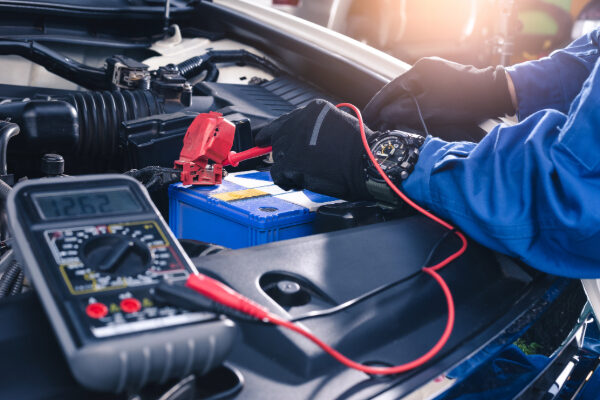
If you haven’t bought a new car in a few years, you may be in for a surprise the next time you need to change your tire. For about the past four years, most car manufacturers have been leaving an old standard off of new cars: the spare tire.
“It’s been a slow, progressive change,” says Gene Petersen, tire program manager for Consumer Reports. “We started seeing it a few years back in some of the cars we’d test, and noticed that car manufacturers were beginning to get rid of the spare tires.”
Not everyone drives with a spare tire. However, that doesn’t mean you’re automatically stranded. Here are some simple tips on what to do when you have a flat tire and no spare:
1. Use a tire repair kit
Keep a tire repair kit on hand. If you get a flat, a small patch can be just want you need to make it to a service stop. Kits often include sealant that can be used to cover small punctures on the tread, as well an air compressor to then inflate your tires. While this is only a temporary fix, it is a cheap option that can save you from being stranded if the culprit is a hole in the tread.
How to patch a punctured tire
Now that you know to keep a repair kit in your car, here are some quick steps to temporarily patch a tire. These should help you use your tire to drive your car to a mechanic. Familiarize yourself with these steps before you find yourself in an emergency.
- Locate the tire that is losing air and remove debris from the puncture hole.
- Keep the tire on the rim. Expand the puncture hole and lubricate it to prepare for repair plug insertion.
- Insert the repair tool and the plug all the way into the puncture.
- Pull the tool from the puncture hole, leaving the plug in the tire.
- Trim the end of the plug so that it is flush with the tire wall.
2. Use a run-flat tire
Purchase run flat tires. In the case of a puncture, run-flat tires are able to travel a limited distance at a reduced speed (usually under 50 mph). A run flat tire can also provide more stability in the case of a tire blowout. Just remember, you do have to check the air pressure regularly since it can be hard to tell when run flat tires are low on air. European manufacturers began equipping the cars with run-flat tires, but domestic automakers typically took a different tack, swapping out the spare, jack and toolkit for a kit with a tire inflator/sealant. “The run-flat tires make some sense because they can provide extended mobility. You can typically drive another 50 miles or so” Petersen explains. A sealant kit, however, “is a bit more complicated”. Petersen says the kits are designed to fix a small puncture in the tread, so if there’s any damage in the sidewall, or if it’s a large puncture, sealant kits may be rendered useless.
3. Contact roadside assistance
Be ready to contact emergency services. In case you are not able to seal or re-inflate a tire on your own, a reliable roadside assistance program can be a lifesaver. As long as you have your cell phone, you have access to help. Nationwide’s 24-Hour Emergency Roadside Assistance has you covered any time of day and makes it easy to get back on the road.
Shifting away from supplying spares
Donut tires were a mainstay for many years, providing a backup emergency tire to keep drivers from being stranded by the side of the road. Some manufacturers now offer a spare tire as an optional purchase instead of making it a standard feature.
Do new cars come with spare tires? Why the change? For some cars – such as sports cars and certain minivans – new configurations made it impossible to include a spare tire in the design. But the bigger answer lies in the push for automakers to sell more fuel-efficient vehicles.
“There’s a lot of pressure on manufacturers to make cars more efficient, and one way to do that is to reduce their weight,” Petersen says. “Getting rid of a spare tire, jack and tools can lighten the load and make it more efficient.”
Changing times may also play a role in our new approach to changing tires. Today, Petersen points out, most people have a cellphone and can call for help, or they may have a program such as OnStar that lets them reach out when they need assistance.
“The reality is, people don’t have a flat that often, and when they do, most people aren’t going to change their own tire anymore,” he says.
Consider spares when buying a new car
Petersen says drivers need to add “Does it come with a spare?” to the list of questions they ask when buying a new car. If it doesn’t, they need to find out what kind of options the car company offers instead and make sure they have a plan of action. If the salesman tells you the car has a spare, ask him to show you where it’s stored and what tools are included.
“When you’re buying a new car, typically the last thing you’re going to think about is the tires,” Petersen says. “But you need to look at that. You might want to ask if you can buy a spare tire kit for your car if it doesn’t come with one.”
If you need to fix a flat tire but don’t have a spare and it’s not an option as an add-on, you need to have a plan.
Implementing these tips can prevent you from being stranded in the event of a flat tire, but the best solution is prevention. Use these tire maintenance tips to help keep your wheels rolling.



